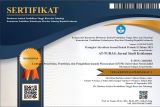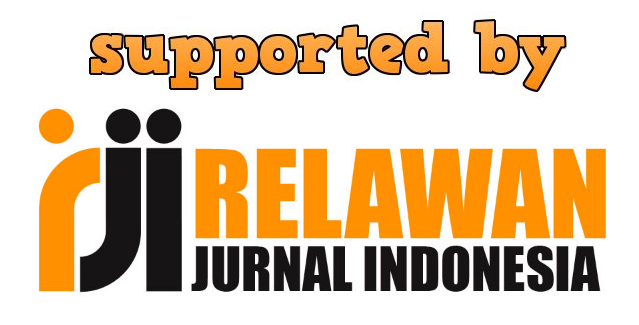General Author Guidelines
- The Manuscript should be written in Indonesian or English and should be original, unpublished and not under reviewed for possible publication in any other journals.
- The Manuscript may take the form of research, case studies, or literary studies.
- The manuscript submitted via website: https://ejournal.unuja.ac.id/index.php/at-turas
- The Manuscript will be published in At-Turas: Jurnal Studi Keislaman after being reviewed by peer-reviewers
- The Manuscript should be prepared according to the following author guidelines and Template. The writing template can be downloaded here.
Structure of The Manuscripts
The Manuscript that will be submitted in this journal should contain:
- Title : The title should be short, clear, and informative, but does not exceed 16 words. It has to be pinpoint with the issues discussed. The article title does not contain any uncommon abbreviations. The main ideas should be written first and followed by its explanations.
- Author’s names and institutions. The author's names should be accompanied by the author's institutions, institutions address, and email addresses, without any academic titles and job title.
- Abstract : Abstracts is written in a single paragraph of about 250 words maximum. For research articles, abstracts should give a pertinent overview of the work. We strongly encourage authors to use the following style of structured abstracts, but without headings: (1) Background: Place the question addressed in a broad context and highlight the purpose of the study; (2) Purpose of the Study: Identify the purpose and objective of the study; (3) Methods: Describe briefly the main methods or theoretical framework applied; and (4) Results: Summarise the article's main findings.
- Keywords : List three to five pertinent keywords specific to the article; yet reasonably common within the subject discipline; use lower case except for names
- Introduction : The introduction should briefly place the study in a broad context and highlight why it is important. It should define the purpose of the work and its significance. The current state of the research field should be reviewed carefully, and key publications cited. Please highlight controversial and diverging hypotheses when necessary. Finally, briefly mention the main aim of the work and highlight the principal conclusions. As far as possible, please keep the introduction comprehensible to scientists outside your particular field of research. References should be cited as (Kamba, 2018) or (Marchlewska et al., 2019) or (Cichocka, 2016; Hidayat & Khalika, 2019; Ikhwan, 2019; Madjid, 2002). See the end of the document for further details on references. Technical terms should be defined. Symbols, abbreviations, and acronyms should be defined the first time they are used. All tables and figures should be cited in numerical order
- Method : The method contains an explanation of the research approach, subjects of the study, the conduct of the research procedure, the use of materials and instruments, data collection, and analysis techniques.
- Result and Discussion : The results obtained from the research have to be supported by sufficient data. Authors should discuss the results and how they can be interpreted from the perspective of previous studies and of the working hypotheses. The findings and their implications should be discussed in the broadest context possible. Future research directions may also be highlighted. The following components should be covered in the discussion: How do your results relate to the original question or objectives outlined in the Introduction section (what/how)? Do you provide interpretation scientifically for each of your results or findings presented (why)? Are your results consistent with what other investigators have reported (what else)? Or are there any differences?
- Conclusion : The conclusion should answer the objectives of the research and research discoveries. The concluding remark should not contain only the repetition of the results and discussions or abstract. You should also suggest future research and point out those that are underway.
- References : The literature listed in the References contains only the sources referenced or included in the article. We recommend preparing the references with a bibliography software package, such as Mendeley, EndNote, Reference Manager or Zotero to avoid typing mistakes and duplicated references. Referral sources should provide 80% of journal articles, proceedings, or research results from the last five years. Writing techniques bibliography, using the system cites APA (American Psychological Association) Style and the 6th edition.





.png)





